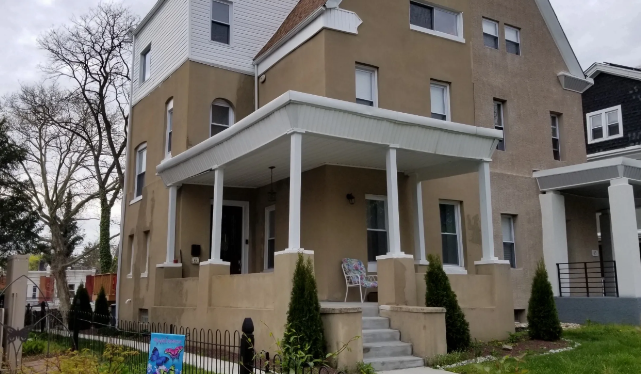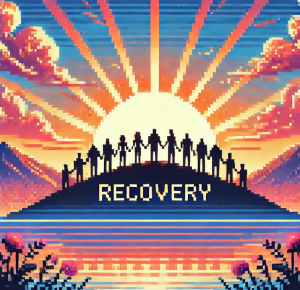
Why Recovery Housing Deserves a Second Look in the Fight Against Substance Use Disorder
What if your ZIP code mattered as much as your treatment plan? For people recovering from substance use disorder (SUD), the place they call home might be one of the most powerful tools in their journey toward health.
A new systematic review reveals that recovery housing—structured, abstinence-based group homes—can do more than just offer a roof over someone’s head. It can reduce drug use, boost employment, and even keep people out of jail. While not a silver bullet, it’s a promising, cost-effective piece of the recovery puzzle. And yet, it’s still wildly underused and under-researched.
Let’s break down what the research tells us—and why it matters more than ever.
What Is Recovery Housing?
Recovery housing is more than just sober living. It’s a broad term for housing options that support people as they transition from clinical treatment to long-term recovery. These homes are abstinence-based and range from peer-run spaces like Oxford Houses to supervised settings with professional staff.
Think of it as the “group project” version of recovery—people supporting each other, sharing resources, and navigating early sobriety together. Recovery homes might offer job support, help with legal issues, and peer accountability—all in a substance-free environment.
The Evidence: What Do We Actually Know?
The review looked at five high-quality studies—three randomized controlled trials and two quasi-experimental studies—that compared recovery housing to “business as usual.” That usually meant no additional structured support after treatment.
Here’s what they found:
- Abstinence rates were consistently higher for people in recovery housing, especially for alcohol use. In one study, 65% of Oxford House residents were abstinent after two years, compared to just 31% in usual care.
- Employment and income increased. In several studies, residents earned up to double the income of their peers not in recovery housing.
- Fewer criminal charges and lower incarceration rates. While findings were mixed, some studies showed reduced involvement with the criminal justice system.
- It saved money. Cost-benefit analyses showed that recovery housing pays off in reduced healthcare, legal, and social service costs.
But not all groups benefited equally. Women—particularly formerly incarcerated women—showed fewer gains in employment and income, though some studies noted life-saving outcomes (including zero deaths in Oxford House compared to four in the comparison group).
Why This Matters for Public Health
Substance use disorder affects nearly 50 million Americans. Every day, over 300 people in the U.S. die from drug overdoses. The economic toll? Over $400 billion annually.
But here’s the hopeful part: SUD has a high recovery rate. Around 70-75% of people who seek recovery ultimately achieve remission. The key is ongoing support. Just like diabetes or heart disease, SUD is chronic and needs long-term care—not just a 28-day program and a “good luck” handshake.
That’s where recovery housing comes in. It offers real-world, long-term support in a safe environment. For many, it’s the missing link between treatment and lasting recovery.
The Hidden Story: Race, Incarceration, and Equity
One surprising finding: 75% of recovery housing study participants were Black. This overrepresentation isn’t due to higher rates of drug use. In fact, only 5% of drug users in the U.S. are Black, but they make up 33% of drug-related incarcerations.
The “war on drugs” disproportionately harmed communities of color. Now, recovery housing may offer a way to repair some of that damage. Studies show Black residents tend to stay in Oxford Houses longer and may benefit more from peer-run models. Still, more research is needed to understand what models work best for different populations.
What’s Next?
While the early evidence is promising, this area of research is still in its infancy. Here’s what future studies should focus on:
- Diverse housing models: Most research so far has focused on peer-run Oxford Houses. We need more data on supervised, monitored, and clinical recovery housing.
- Gender-specific approaches: Women—especially those with criminal justice involvement—may need tailored support models.
- Matching people to the right level of support: Not everyone needs the same structure. Personalized models could improve outcomes.
- Comparing recovery housing with medication-based treatment: Studies should explore how housing interacts with medications for opioid use disorder.
- Duration matters: What’s the ideal length of stay? Three months? Six? A year? This hasn’t been rigorously tested yet.
- Integration with Housing First: How can we bridge recovery housing and low-barrier housing for unhoused individuals with SUD? Warm handoffs between these systems could be key.
Practical Takeaways
If you’re a public health practitioner, clinician, or policymaker, here are a few things to consider:
- Recovery housing works. It improves outcomes and saves money, especially for men and alcohol use disorder.
- Tailor support. Women and people who primarily use drugs other than alcohol may need different structures or add-ons, like motivational interviewing or case management.
- Think equity. Recovery housing might be an important lever for health equity, especially in Black communities and for people returning from incarceration.
- Push for more research and funding. The evidence base is growing, but still small. We need investment to figure out who benefits most, and how to make these models scalable and sustainable.
Join the Conversation
Do you work with or live in recovery housing? Have you seen it change lives—or fall short? We want to hear from you.
- What role does stable housing play in long-term recovery in your experience?
- How can recovery housing better serve women and people with histories of incarceration?
- What would it take to scale recovery housing while keeping it affordable and effective?
Let’s build the next phase of recovery together—one home, one person, one community at a time.
Don’t Wait – Stay Informed, Drive Change!
Public health needs your voice today. Join thousands of leaders making a difference by subscribing to This Week in Public Health. Get powerful updates and tools to create impact.
🔥 Every second counts! Share this blog now to expand our reach and strengthen our movement.



